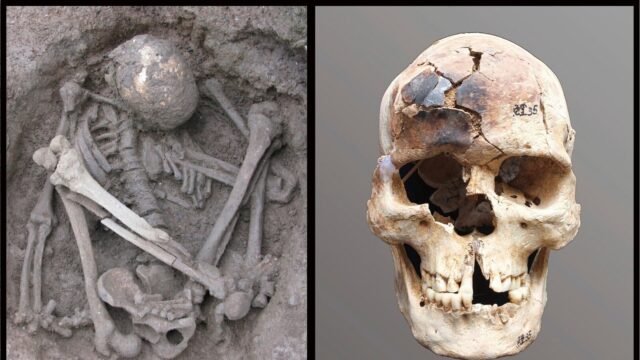New York – Scientists have discovered what are believed to be the oldest known mummies in the world in Southeast Asia, dating back 12,000 years.
Mummification prevents decay by preserving dead bodies. The process can occur naturally in places like the sands of Chile’s Atacama Desert or the bogs of Ireland, where conditions can prevent decomposition. People in various cultures have also mummified their ancestors through embalming to honor them or send their souls to the afterlife.
Egyptian mummies may be the most well-known, but by far some of the oldest mummies were prepared by a people called Chinchorro about 7,000 years ago in what is now Peru and Chile.
A new study published Monday in the journal Proceedings of the National Academy of Sciences pushes back that timeline.
Researchers found human remains buried in hunched or squatting positions with some cuts and burn marks at various archaeological sites across China and Vietnam, and to a lesser extent from the Philippines, Laos, Thailand, Malaysia and Indonesia.
Upon further examination of the bones, scientists discovered that the bodies had likely been exposed to heat, suggesting that the bodies were smoky-dried over a fire and mummified by hunter-gatherer communities in the area.
The practice “allowed people to maintain physical and spiritual connections with their ancestors, overcoming time and memory,” study author Hirofumi Matsumura of Sapporo Medical University in Japan said in an email.
The dating methods used on the mummies could have been more robust, and it’s not yet clear whether the mummies smoked consistently at all these sites in Southeast Asia, said human evolution expert Rita Peyroteo Stjerna with Uppsala University in Sweden, who was not involved with the study.
The results offer “an important contribution to the study of prehistoric funerary practices,” she said in an email.
Mummies are a long way from the past. Even today, indigenous communities in Australia and Papua New Guinea smoke-dry and mummify their dead, scientists said.
___
The Associated Press Health & Science Department receives support from the Howard Hughes Medical Institute’s Department of Science Education and the Robert Wood Johnson Foundation. The AP is solely responsible for all content.















